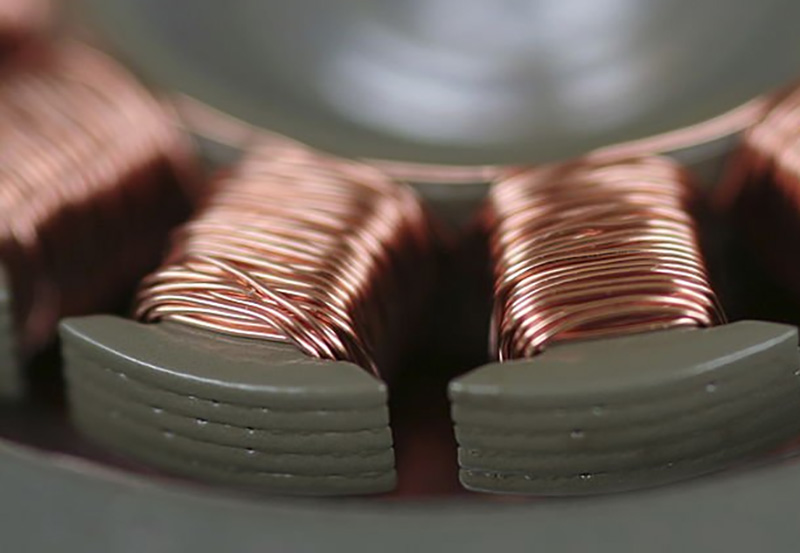Because stators interact with the rotor to produce torque, they are fundamental to driving motor shafts and propelling vehicles. This application focuses on the inspection of stator windings that utilize traditional wire winding methodologies.

What manufacturing defects occur?
Many manufacturing defects can occur during wire winding, such as:
These defects can significantly affect the performance, efficiency, and reliability of electric motors and manufacturers should implement quality control measures to prevent them.
However, these defects can be difficult to detect– metallic winding surfaces may reflect light in a way that masks defects. And many winding defects are subtle and hard to image, especially if the defect’s contrast to the background is low. Traditional machine vision systems struggle to capture clear images and distinguish between actual defects, reflective surfaces, and the background, ultimately missing defects or causing false rejections.
Stator windings have complex geometric patterns and are tightly packed, limiting the visibility.
And in high-volume manufacturing environments, windings must be inspected quickly to keep up with production rates. Traditional machine vision products may fail to keep up with required cycle times.
The Solution
UnitX’s AI-powered inspection effectively inspects stator windings where other solutions fail.
First, the OptiX imaging system illuminates and images the stator windings. Then, the CorteX Central AI platform is trained on winding defects. Lastly, those AI models are deployed to the CorteX Edge inference system to detect and classify defects in-line.
Why UnitX for stator winding inspection?
OptiX provides superior images that minimize reflectivity while maximizing defect visibility. It has 32 independently controllable lighting sources that can be optimized for stator winding surfaces and various defects via software. Its computational imaging capability can be used to take multiple shots and eliminate hotspots caused by highly reflective winding surfaces. And its lighting dome design supports a very acute incidence angle of projected light, causing even very tiny defects to cast shadows which increase their visibility.
CorteX accurately detects random, complex defects. It automatically normalizes for variability in positions and orientations and recognizes defects down to the pixel-level. It reduces false positives that lead to scrap and wasted product.
CorteX supports fast AI model development, deployment, and iteration. CorteX AI models are sample efficient– they only require a few images to train on new defect types.
UnitX optimizes yield. In CorteX, can tune quality criteria and visualize the impact on yield before rolling those changes to production. All inspection data is referenceable in one central platform for manufacturers to analyze and identify areas for process improvements.
UnitX provides rapid, 100% inline inspection. OptiX has bright LEDs and fast fly capture speeds of 1m/s for high speed imaging. And CorteX Edge supports high inference speeds (up to 100 MP) to quickly output an OK/NG decision, seamlessly communicating that decision via integration to all major PLC, MES, and FTP systems.
Manufacturers who use UnitX to automate stator winding inspection are able to:
- Prevent quality escapes that impact automobile reliability, performance, and safety
- Reduce scrap by minimizing false rejection rates common with traditional machine vision
- Improve yield by analyzing production and quality data for process improvement opportunities
- Automate inspection at the speed of their production to increase stator manufacturing throughput